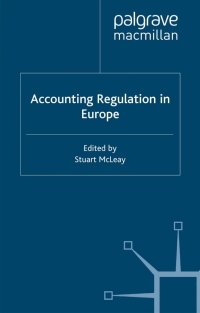

Stefan and Co., Inc. Balance Sheet December 31, 2008-2009 December 31, 2019 December 31, 2020 Assets Cash Accounts receivable Inventory Total current assets Plant and equipment Less: Allowance for depreciation Total net fixed assets Total assets $ 500,000 1,000,000 1,500,000 $ 3,000,000 12,000,000 (5,000,000) $ 7,000,000 $10,000,000 $ 100,000 1,200,000 1,500,000 $ 2,800,000 14,800,000 (5,600,000) $ 9, 200,000 $12,000,000 Liabilities and Net Worth Accounts payable Short-term notes Accrued liabilities Total current liabilities Long-term debt Common stock, $10 par Retained Earnings $ 400,000 500,000 200,000 $ 1,100,000 2,000,000 2,000,000 4,900,000 $ 420,000 2,240,000 240,000 $ 2,900,000 2,000,000 2,000,000 5,100,000 Total liabilities and net worth $10,000,000 $12,000,000 Income Statement For Year Ended December 31, 2009 Sales Cost of goods sold Gross profit $12,000,000* 9,000,000 $ 3,000,000 Operating expenses Variable cash operating expense Fixed cash operating expense Depreciation Total operating expenses 840,000 300,000 600,000 $ 1,740,000 Earnings before interest and taxes Interest 1,260,000 396,000 $ Earnings before taxes Taxes @ 30% 864,000 259, 200 Net income $ 604,800 * Includes 60 percent credit sales. Stefan and Co., Inc. Standard Industry Ratios Ratio Industry* Current ratio Acid-test (quick) ratio Average Collection Period (ACP) Inventory turnover (COGS to ending inventory) Fixed asset turnover Total asset turnover Debt ratio (total liabilities to total assets) Times interest earned (overall interest coverage) Gross profit margin EBIT margin Net profit margin Return on total assets Return on equity 3.50x 1.50X 60.0 days 5.00x 1.43x 1.00x 45.0% 4.10X 25.0% 14.8% 8.0% 8.0% 14.55% *All ratios are based on year-end (rather than average) balance sheet figures and on 360 (rather than 365) days in a year. Average collection Period for the industry is calculated as: ACP = Accounts Receivable / Credit Sales per Day. 1. Conduct a complete ratio analysis which thoroughly examines profitability, liquidity, asset management and debt management. Using both the ratio analysis and the cash flow statement you developed earlier, prepare statement of the firm's financial condition. Note that it might be helpful in your analysis to calculate ratios for both 2008 and 2009 wherever possible, to highlight trends, in addition to comparing Stefan and Co. to its industry averages. Also, a comparative common-size income statement may prove useful. a. Based on your analysis, what areas of the firm's operations are in greatest need of immediate attention? Prepare a planned course of action for the solution of the firm's most pressing problems. Stefan and Co., Inc. Balance Sheet December 31, 2008-2009 December 31, 2019 December 31, 2020 Assets Cash Accounts receivable Inventory Total current assets Plant and equipment Less: Allowance for depreciation Total net fixed assets Total assets $ 500,000 1,000,000 1,500,000 $ 3,000,000 12,000,000 (5,000,000) $ 7,000,000 $10,000,000 $ 100,000 1,200,000 1,500,000 $ 2,800,000 14,800,000 (5,600,000) $ 9, 200,000 $12,000,000 Liabilities and Net Worth Accounts payable Short-term notes Accrued liabilities Total current liabilities Long-term debt Common stock, $10 par Retained Earnings $ 400,000 500,000 200,000 $ 1,100,000 2,000,000 2,000,000 4,900,000 $ 420,000 2,240,000 240,000 $ 2,900,000 2,000,000 2,000,000 5,100,000 Total liabilities and net worth $10,000,000 $12,000,000 Income Statement For Year Ended December 31, 2009 Sales Cost of goods sold Gross profit $12,000,000* 9,000,000 $ 3,000,000 Operating expenses Variable cash operating expense Fixed cash operating expense Depreciation Total operating expenses 840,000 300,000 600,000 $ 1,740,000 Earnings before interest and taxes Interest 1,260,000 396,000 $ Earnings before taxes Taxes @ 30% 864,000 259, 200 Net income $ 604,800 * Includes 60 percent credit sales. Stefan and Co., Inc. Standard Industry Ratios Ratio Industry* Current ratio Acid-test (quick) ratio Average Collection Period (ACP) Inventory turnover (COGS to ending inventory) Fixed asset turnover Total asset turnover Debt ratio (total liabilities to total assets) Times interest earned (overall interest coverage) Gross profit margin EBIT margin Net profit margin Return on total assets Return on equity 3.50x 1.50X 60.0 days 5.00x 1.43x 1.00x 45.0% 4.10X 25.0% 14.8% 8.0% 8.0% 14.55% *All ratios are based on year-end (rather than average) balance sheet figures and on 360 (rather than 365) days in a year. Average collection Period for the industry is calculated as: ACP = Accounts Receivable / Credit Sales per Day. 1. Conduct a complete ratio analysis which thoroughly examines profitability, liquidity, asset management and debt management. Using both the ratio analysis and the cash flow statement you developed earlier, prepare statement of the firm's financial condition. Note that it might be helpful in your analysis to calculate ratios for both 2008 and 2009 wherever possible, to highlight trends, in addition to comparing Stefan and Co. to its industry averages. Also, a comparative common-size income statement may prove useful. a. Based on your analysis, what areas of the firm's operations are in greatest need of immediate attention? Prepare a planned course of action for the solution of the firm's most pressing problems








